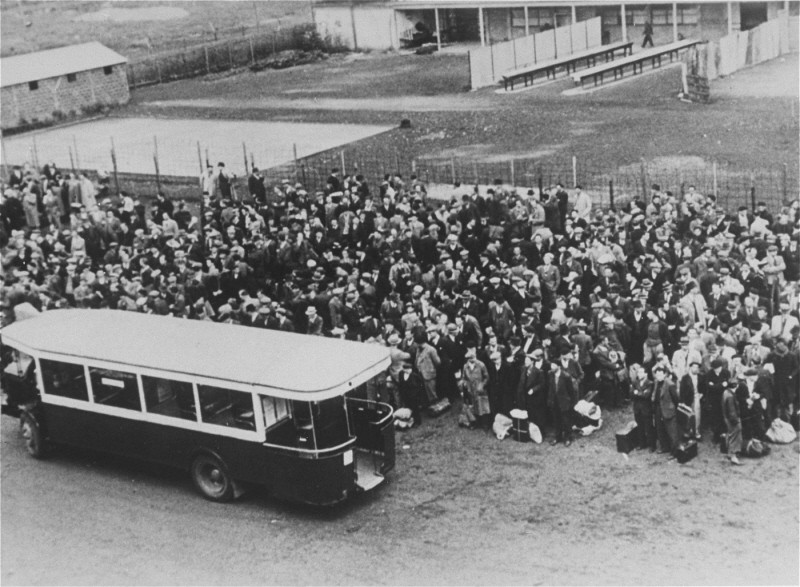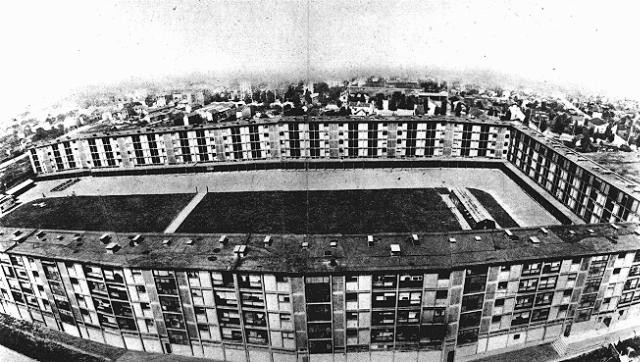
Drancy
Between 1933 and 1945, Nazi Germany and its allies established more than 44,000 camps and other incarceration sites (including ghettos). The perpetrators used these locations for a range of purposes, including forced labor, detention of people deemed to be “enemies of the state,” and mass murder. Millions of people suffered and died or were killed. Among these sites was the Drancy transit camp in France.
Internment and Transit Camp

The Drancy camp was located in a northeastern suburb of Paris, also called Drancy.
In August 1941, the Germans established an internment camp at Drancy, following the arrest of more than 4,200 Jewish men in Paris.
Beginning in summer 1942, Drancy became the major transit camp for the deportations of Jews from France. Until July 1943, French police staffed the camp under the overall control of the German Security Police and SD. In July 1943 the Germans took direct control of the Drancy camp and SS officer Alois Brunner became camp commandant.
The camp was a multistory U-shaped building. It was originally built in the 1930s as a housing project. Prior to becoming an internment camp, the building had served several other purposes, including as a prisoner of war camp. Barbed wire surrounded the building and its courtyard.
In addition to this multistory building, there were other sites located throughout Paris that were associated with the Drancy camp. These sites were primarily used as warehouses for personal property confiscated from Jews and included:
- the Austerlitz train station
- the Hotel Cahen d'Anvers
- the Lévitan furniture warehouse
Approximately 70,000 prisoners passed through Drancy between August 1941 and August 1944. Except for a small number of prisoners (mostly members of the French resistance), the overwhelming majority were Jews. Approximately one thousand prisoners managed to obtain release during the first year of the camp’s existence.
Deportations from Drancy

A transport left Drancy for Auschwitz on March 27, 1942. However, systematic deportations of Jews from Drancy to killing centers in German-occupied Poland did not begin until June 22, 1942, when 1,000 Jews were sent from Drancy to Auschwitz-Birkenau. Altogether, between the first transport in March 1942 and the last, on July 31, 1944, approximately 64,000 Jews were deported from Drancy in 62 transports. The vast majority of these Jews were sent to Auschwitz-Birkenau. The Germans also deported between 3,000 and 4,000 Jews from Drancy to the Sobibor killing center.
Some of the Jews deported from Drancy were French citizens. The majority were foreign-born Jews who had immigrated to France in the 1920s and 1930s, primarily from Poland, Germany, and, after 1938, Austria. Many distinguished French Jewish intellectuals and artists were held in Drancy, including the poet Max Jacob, the choreographer René Blum, and the playwright Tristan Bernard.
In mid-August 1944, as Allied forces neared, the German authorities in Drancy fled after burning many camp documents. Fifteen hundred prisoners remained in Drancy. Fewer than 2,000 of the approximately 64,000 Jews deported from the Drancy camp survived the Holocaust.
Critical Thinking Questions
How was Drancy different from most camps? How was it similar?
Why were foreign-born Jews often targeted first?
How were French personnel involved in the establishment and operation of Drancy?

